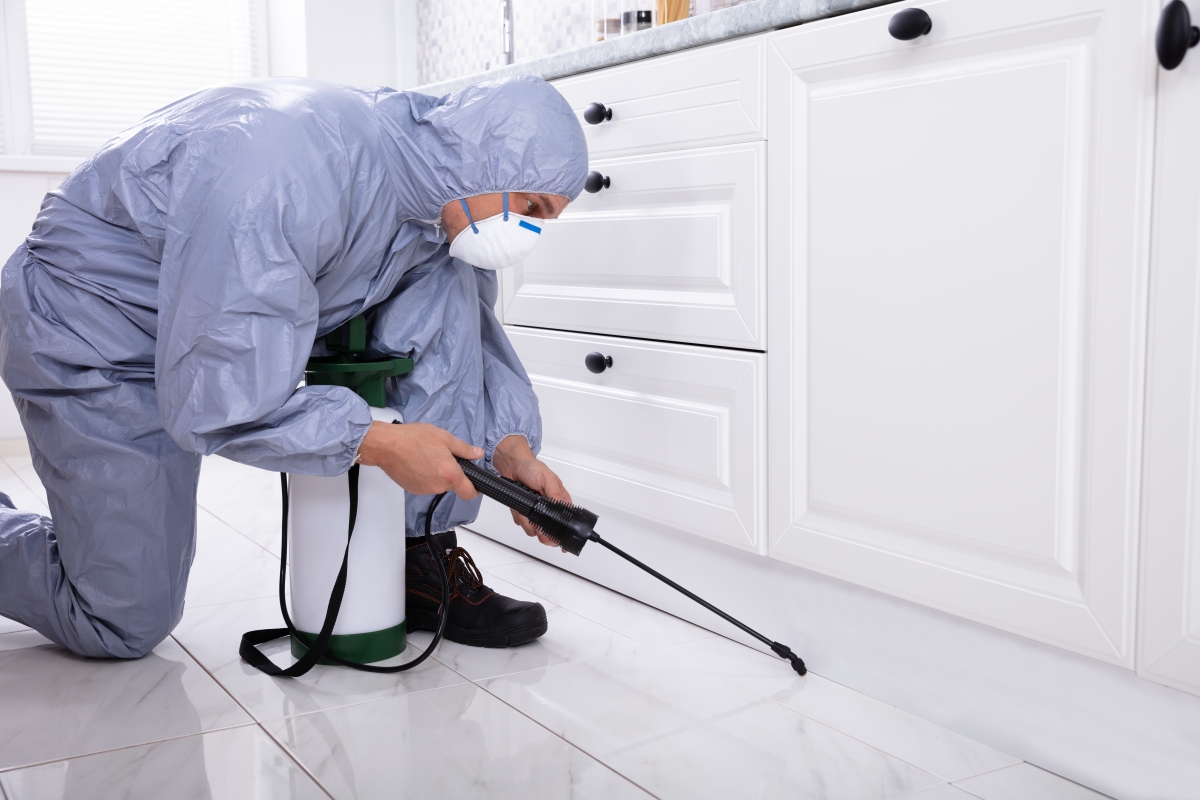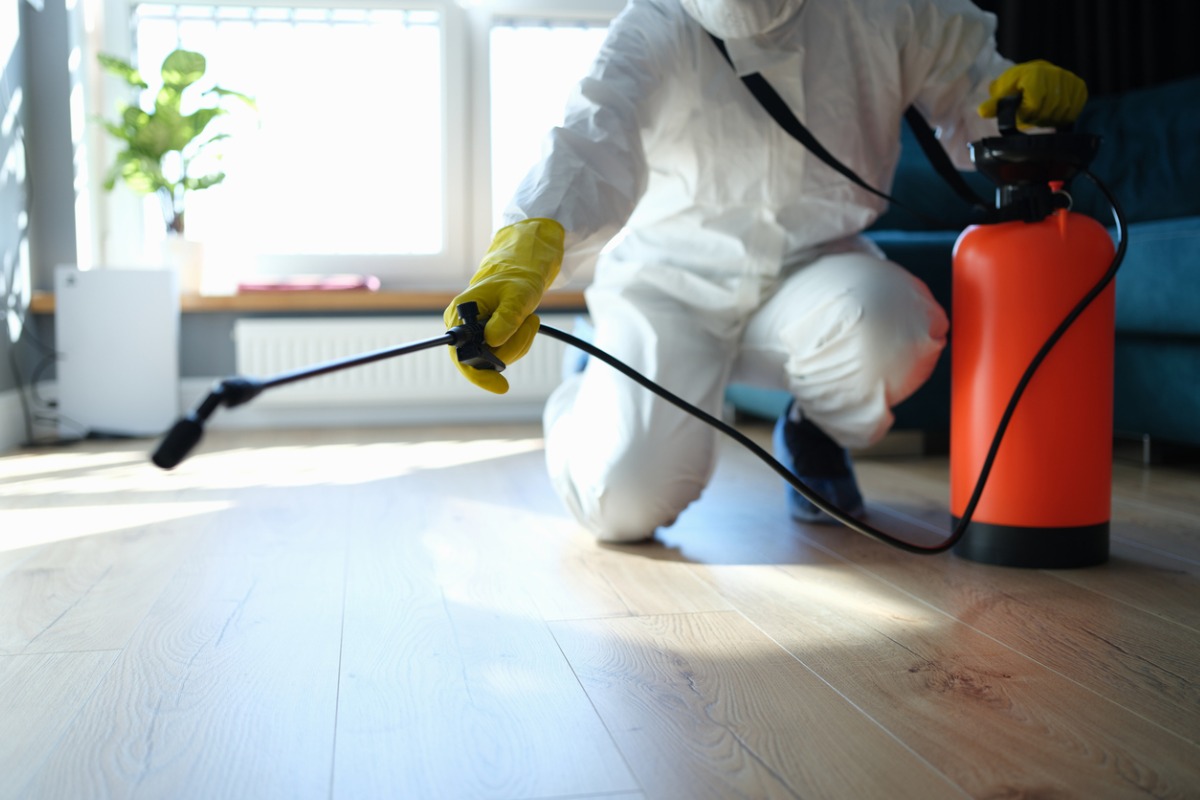Safe and Trusted Parasite Control for Lasting Defense
The significance of secure and trustworthy pest control can not be overemphasized, specifically in a period where ecological issues are paramount. Reliable pest administration calls for a diverse technique that stabilizes ecological honesty with the need for effective insect reductions. By checking out environment-friendly remedies and incorporated pest monitoring approaches, homeowners can attain long-term security versus intrusive types while securing useful ecological communities. However, the nuances of these methods might not be right away clear, triggering a closer exam of the techniques that can bring about sustainable bug control results. What steps can be taken to make sure both safety and efficacy in pest administration?
Recognizing Parasite Control Methods
Pest control incorporates a range of approaches aimed at handling and removing unwanted bugs and rats that can intimidate both health and residential or commercial property. Understanding these approaches is critical for reliable parasite administration.
The primary groups of insect control techniques include mechanical, organic, and chemical approaches. Mechanical techniques entail physical obstacles and traps to stop bug entrance and capture unwanted types. As an example, utilizing displays on windows or employing sticky traps can significantly minimize pest populations without introducing dangerous compounds.

Chemical pest control is often one of the most acknowledged method, using chemicals to eliminate bugs. These chemicals can be reliable however should be used with care to stay clear of unfavorable results on non-target species and the atmosphere.
Benefits of Eco-Friendly Solutions
How can environmentally friendly solutions change parasite control practices? The adoption of green parasite control approaches provides many benefits, substantially enhancing the efficiency and safety of parasite administration.

Another advantage is the positive effect on local biodiversity. Environmentally friendly solutions are developed to target specific insects while preserving beneficial pests and wild animals, advertising a balanced environment. This strategy aligns with the expanding customer demand for sustainable practices, improving the online reputation of insect control service providers.
Integrated Pest Administration Techniques
The execution of eco-friendly services naturally brings about the fostering of Integrated Insect Administration (IPM) strategies, which further enhance bug control efficacy. IPM is an alternative approach that combines numerous methods to handle insect populations while decreasing ecological effect. This strategy stresses the usage of organic, cultural, mechanical, and chemical controls, guaranteeing a well balanced and sustainable technique of parasite monitoring.
One basic element of IPM is the complete evaluation of parasite activity and environmental problems. By keeping an eye on bug populations and recognizing their life process, specialists can apply targeted treatments that interfere with the bug's habitat or lifecycle, lowering reliance on chemical pesticides. Additionally, social practices such as crop rotation and habitat adjustment can significantly decrease bug facility and reproduction.
An additional essential component is making use of biological control agents, such as valuable pests or microbes, which can normally reduce bug populaces. When chemical applications are required, IPM prioritizes visit site making use of low-risk chemicals and uses them selectively, decreasing direct exposure to non-target microorganisms and people.
Including IPM techniques not only boosts bug control effectiveness however likewise advertises a much safer ecosystem, straightening with the growing demand for lasting methods in pest management.
Safe Practices for Homeowners
Comprehending the importance of risk-free methods in insect control can empower home owners to successfully handle pest issues while safeguarding their health and wellness and the environment. Executing preventative procedures and non-toxic approaches is critical in reducing exposure to dangerous chemicals.
Property owners need to initially examine their environment for conditions that draw in insects, such as standing food, clutter, and water waste. On a regular basis cleaning and securing entrance points can discourage parasites from getting into the home. Making use of all-natural deterrents, such this link as vital oils or diatomaceous earth, can provide effective choices to chemical pesticides.
When chemical treatments are essential, house owners should go with items that are specifically labeled as risk-free for domestic usage. It is necessary to adhere to application standards meticulously to prevent too much exposure. Utilizing targeted therapies in locations where pests are identified, rather than blanket splashing, can substantially lower chemical use.
Finally, keeping open communication with bug control experts is essential. Homeowners must ask about the safety of items used and demand environmentally friendly alternatives whenever possible. By taking on these risk-free techniques, property owners can develop a healthier living environment while effectively managing parasite issues.

Tips for Long-Term Defense
Establishing a parasite monitoring approach that emphasizes long-lasting protection can greatly boost the performance of the secure methods previously discussed. To achieve this, homeowners must apply routine evaluations of their building, concentrating on hidden areas such as attics, basements, and crawl rooms. Early detection of insect activity is important in preventing infestations from holding.
These techniques decrease attractants that draw pests into the home. Securing entrance points, such as cracks around doors and windows, can effectively obstruct potential bug accessibility.
Landscape design should also be thought about; keeping plants cut and keeping a distance in between greenery and the home minimizes hiding places for bugs. Making use of all-natural deterrents, such as important oils or diatomaceous planet, can further inhibit problems without considering extreme chemicals.
Finally, working together with an expert parasite control solution for regular examinations can offer an additional layer of safety and next page security. These specialists can use customized referrals and advanced therapies, making sure that your home remains shielded versus bugs in the long-term.
Conclusion
To conclude, risk-free and reliable pest control requires a multifaceted method that highlights green methods and incorporated pest management. By implementing all-natural deterrents, carrying out normal evaluations, and maintaining proper cleanliness, homeowner can considerably lower bug populations while protecting useful insects and the environment. Partnership with specialist bug control solutions improves the efficiency of these approaches, guaranteeing customized solutions that offer enduring defense and satisfaction against future problems.
Effective pest management calls for a multifaceted approach that balances environmental integrity with the demand for efficient bug suppression. The fostering of environmentally friendly bug control methods uses many advantages, substantially improving the effectiveness and safety and security of bug management.The execution of eco-friendly solutions naturally leads to the adoption of Integrated Parasite Management (IPM) approaches, which additionally improve parasite control efficiency. exterminator coquitlam. By monitoring insect populaces and identifying their life cycles, professionals can execute targeted treatments that disrupt the pest's environment or lifecycle, decreasing reliance on chemical pesticides.In final thought, dependable and secure bug control requires a complex strategy that highlights environment-friendly techniques and incorporated pest administration